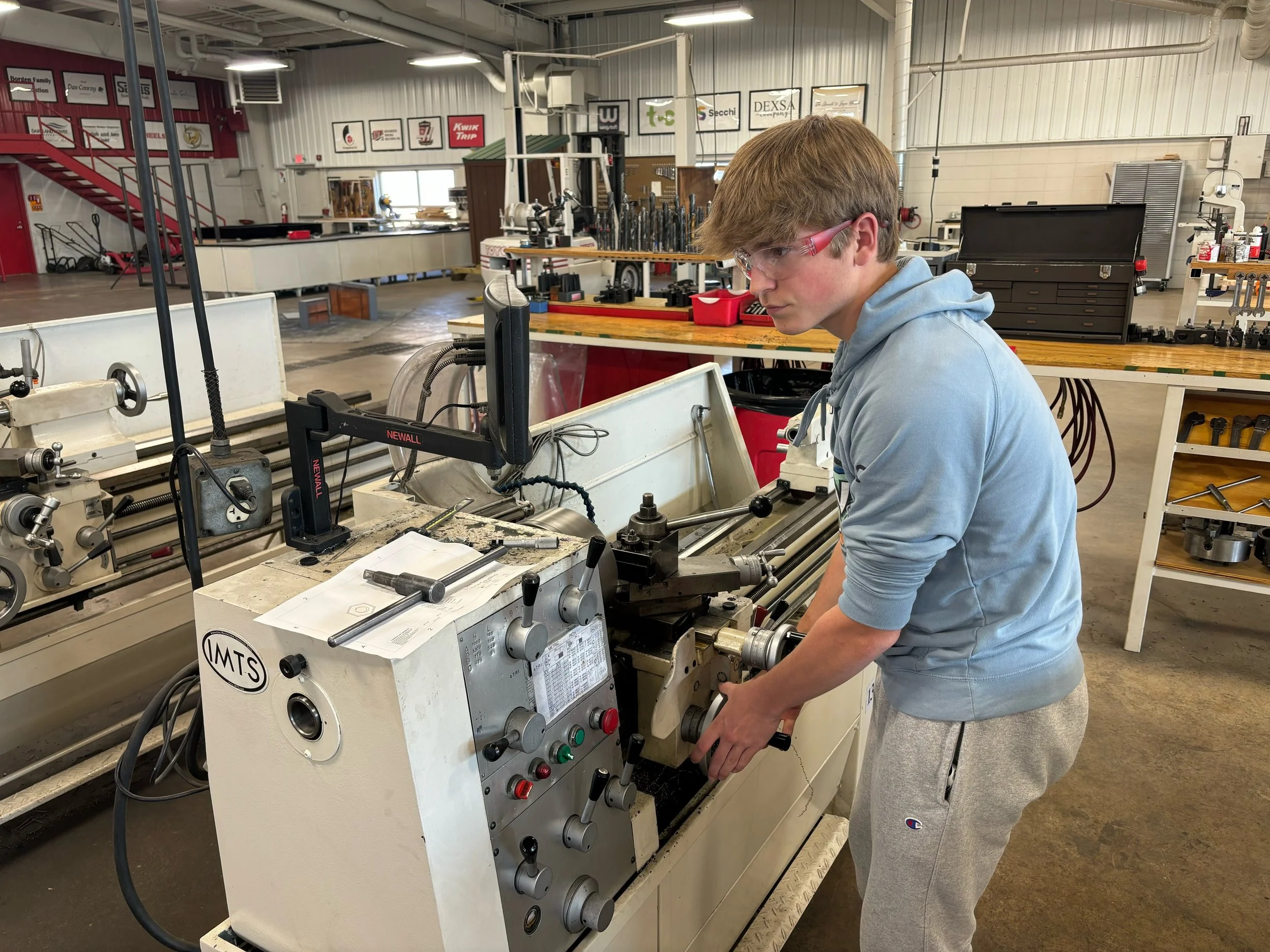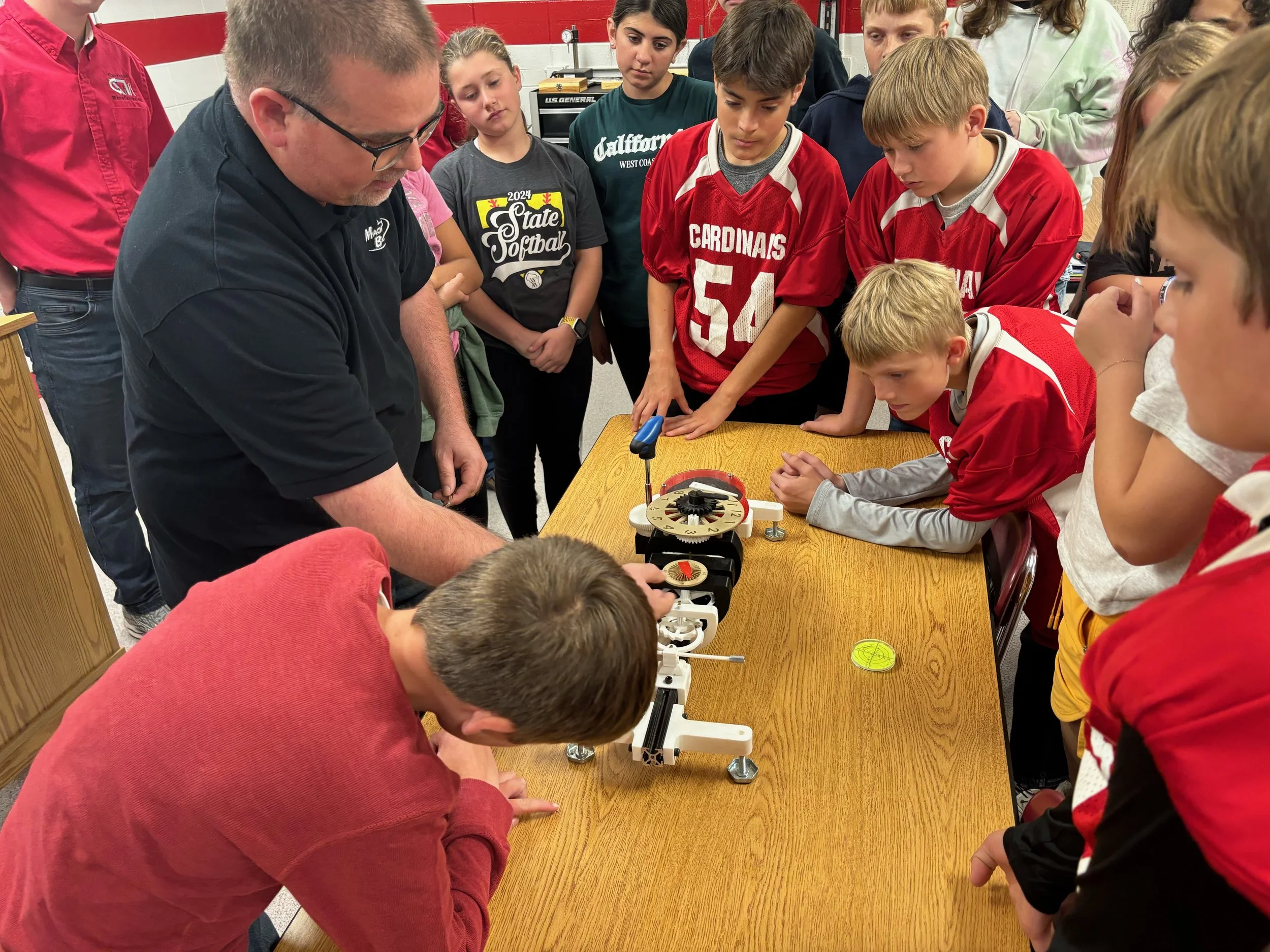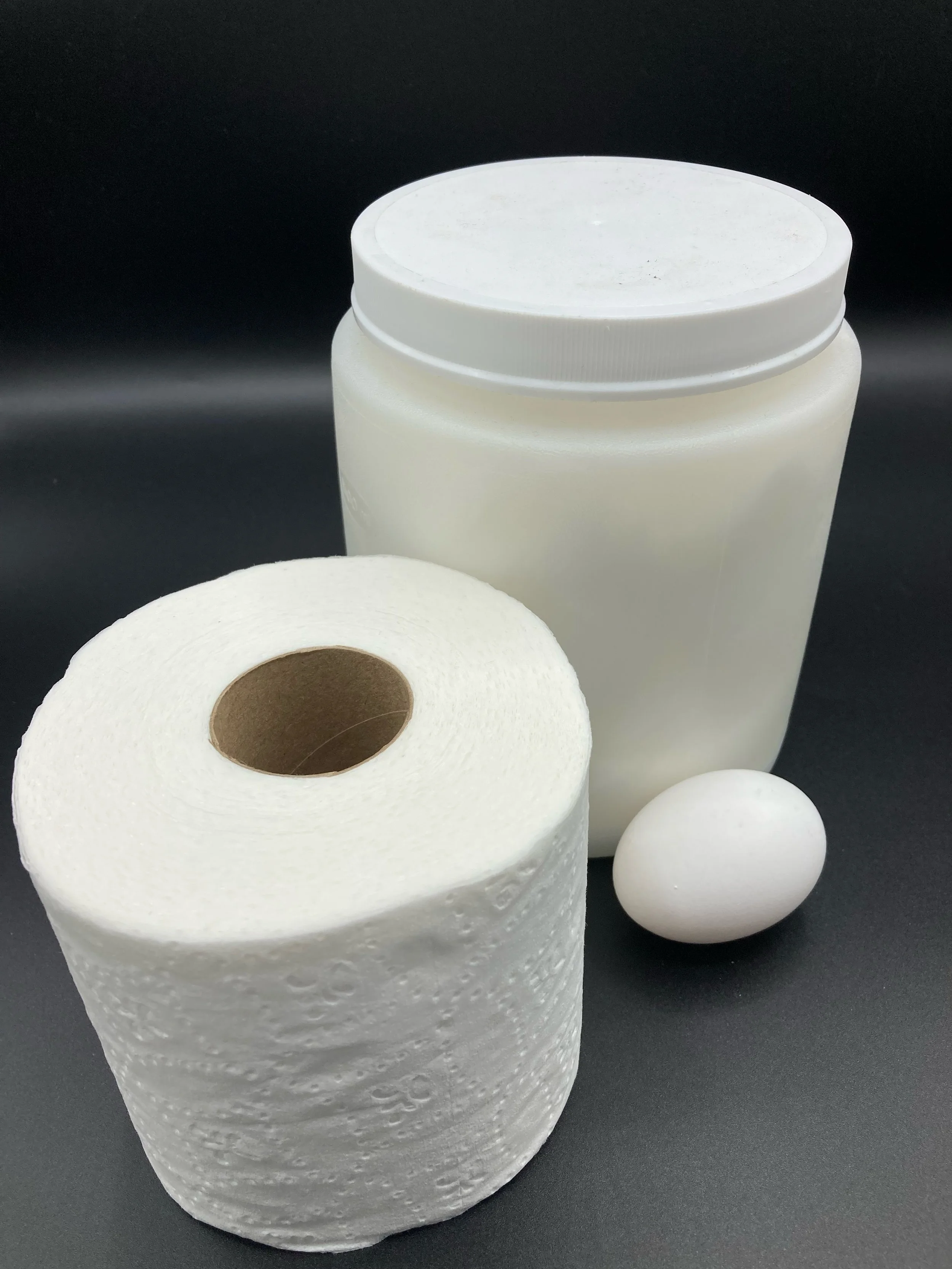All tagged STEM Education
Across the country, educators are searching for meaningful ways to prepare students for life after high school. At Cardinal Manufacturing in Strum, Wisconsin, that preparation is at the core of their mission. The program’s primary goal is to equip students with the technical skills, confidence, and strong work habits that employers look for, such as professionalism, communication and responsibility.
Recently I made a unique tool for showing science, technology, engineering, math, and manufacturing to students. It is a mechanical clock that has over two dozen 3D printed parts in it. In the presentation, students are truly engaged in learning more about the clock.
I recently had an opportunity to work with the technical education program at Eleva-Strum School District in Wisconsin. The project that I had for the students was to modify a few parts for a mechanical clock. It was an amazing experience to be greeted at the door by a student and the student gave me a great handshake. The technical education class teaches these soft skills to the students, starting in seventh grade.
For much of my childhood I didn’t want to be in school, probably like most people. But now I am trying to get back into several schools as a guest speaker to show students my STEM project and how it relates to my great career that I had in manufacturing. It is important to show the students that manufacturing and engineering is an awesome career choice.
During my time operating the Machining Blog business, I have visited a few schools. I noticed one thing that was the same about their programs, and that was their 3D printers were just used to produce trinkets and not mechanical parts. I decided to create a project that could create many learning opportunities from it, and that project was to design and build a mechanical clock. The clock that I designed was based on a mechanical watch design, but I scaled the part size up by six times their actual size. I started the project by reading books on watch design and by taking apart watch movements. I learned along the way and then started designing watch movement parts in Solidworks CAD software. I then purchased a small 3D printer and started printing the parts. Once the gears started to mesh properly, I built a few prototypes along the way. With all my time that I invested in the project, it probably amounted to a couple thousand hours. The result was a clock that is pretty accurate for being printed, not machined.
Nestled in Eleva-Strum High School, Cardinal Manufacturing is revolutionizing technical education through its student-run business model. As a beacon of excellence, Cardinal Manufacturing in Strum, Wisconsin empowers students to gain hands-on experience in manufacturing while running a real business. This innovative approach not only equips students with invaluable skills but also positions the program as a leader in the technical education world.
The egg drop challenge is a great STEM activity. There are many ways to build a device that may win in an egg drop challenge. We will cover a very basic way to possibly win. This solution was tested at a 15-foot drop without failure. There are three items needed for this experiment, a large plastic container with a lid, a roll of toilet paper, and a large egg.








